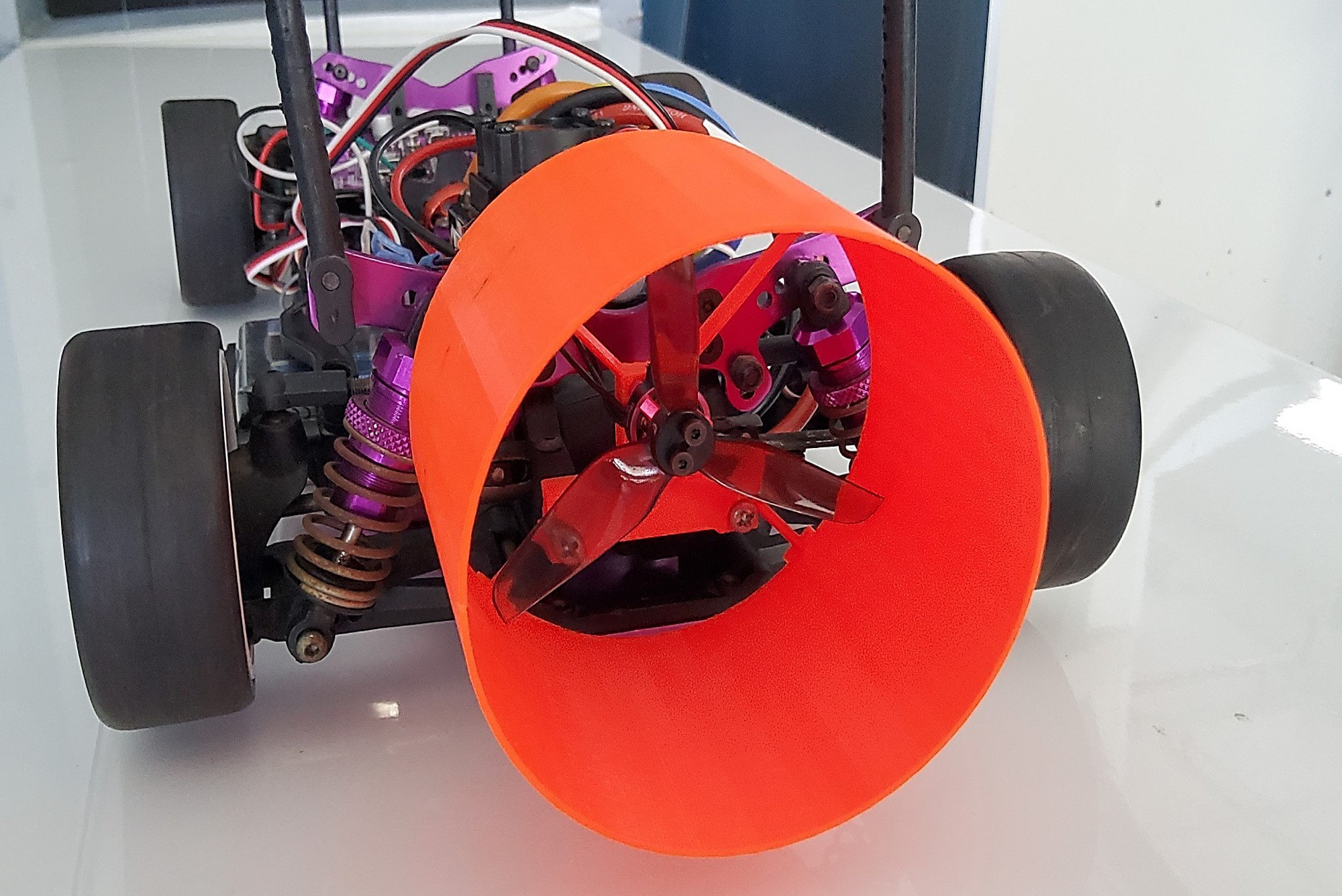Installation of a Rear Fan on RC Race Car Body to Improve Drag
Main Article Content
Abstract
Lola style body 1:10 scale radio-controlled electric race cars are one of the most popular categories among enthusiasts in Thailand. These cars usually have wedge-like body shells which generate large downforces but with a large wake downstream contributing to large pressure drag. This work aims to improve the car aerodynamic performance by installing a rear fan in a similar manner to Gordon Murray Automotive T.50, which has not been attempted on an RC racecar before. Wind tunnel experiments are successfully conducted to evaluate the effects of the rear mounted fan with different rotor diameters and rotation speeds. Test results suggest that the car aerodynamic downforce enhancement by the rear fan is most effective at low Reynold’s number of 4.63×104, where the downforce is observed to increase by 1,440%. Downforce increments at high Reynold’s numbers of 2.18×105 and 3.72×105 are less effective as increases of 104% and 33% are observed, respectively. Drag forces are, however, observed to increase at all three sample Reynold’s numbers. The highest increase in drag force of 242% is observed at low Reynold’s number and, 16.7% and 8% at high Reynold’s number. It can be concluded that the rear mounted fan helps improve the downforce through the extra suction under the body but does not reduce the pressure drag by narrowing the wake as had been anticipated.
Article Details

This work is licensed under a Creative Commons Attribution-NonCommercial-ShareAlike 4.0 International License.
This work is licensed under a Creative Commons Attribution-NonCommercial-ShareAlike 4.0 International License.
References
Harinaldi, Budiarso, Warjito, Kosasih EA, Tarakka R, Simanungkalit SP, et al. Modification of flow structure over a van model by suction flow control to reduce aerodynamics drag. Makara J Technol. 2012;16(1):15-21.
Gordon Murray Design. Gordon Murray Automotive partners with racing point formula one team to ensure T.50 supercar has most advanced aerodynamics ever [Internet]. 2019 [cited 2020 Sep 10]. Available from: https://www.gordonmurraydesign.com/t.50-articles/gordon-murray-automotive-partners-with-racing-point-formula-one-team-to-ensure-t.50-supercar-has-most-advanced-aerodynamics-ever.html.
HQ Durable Prop. HQ Durable Prop T2X2.5X3 (2CW+2CCW)-Poly Carbonate [Internet]. 2019 [cited 2021 Dec 25]. Available from: https://www.hqprop.com/hq-durable-prop-t2x25x3-2cw2ccw-poly-carbonate-p0038.html.
HQ Durable Prop. HQ Durable Prop T2.5X2.5X3 (2CW+2CCW)-Poly Carbonate [Internet]. 2019 [cited 2021 Dec 25]. Available from: https://www.hqprop.com/hq-durable-prop-t25x25x3-2cw2ccw-poly-carbonate-p0110.html.
HQ Durable Prop. HQ Durable Prop T3X2.5X3 Grey (2CW+2CCW)-Poly Carbonate [Internet]. 2019 [cited 2021 Dec 25]. Available from: https://www.hqprop.com/hq-durable-prop-t3x25x3-grey-2cw2ccw-poly-carbonate-p0221.html.
Applied Measurements Limited. How to improve aerodynamics with our single point load cells and digital indicators [Internet]. 2016 [cited 2021 Apr 25]. Available from: https://appmeas.co.uk/blog/improve-aerodynamics-single-point-load-cells-digital-indicators/.
ATO. Single Point Load Cell [Internet]. 2019 [cited 2021 Apr 25]. Available from: https://www.ato.com/ single-point-load-cell-300g-to-500kg.
Akturk A, Camci C. Tip clearance investigation of a ducted fan used in VTOL UAVs, part 2: novel treatments via computational design and their experimental verification. Proceedings of the ASME 2011 Turbo Expo: Turbine Technical Conference and Exposition. Volume 7: Turbomachinery, Parts A, B, and C; 2011 June 6-10; Vancouver, Canada.



